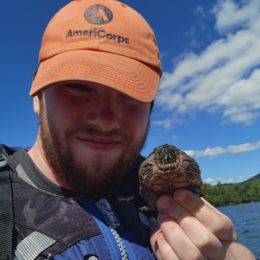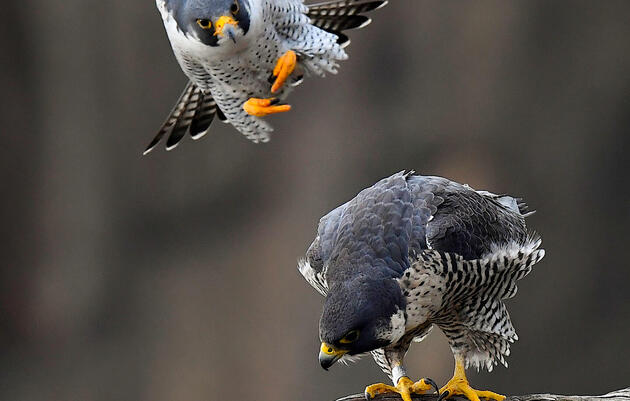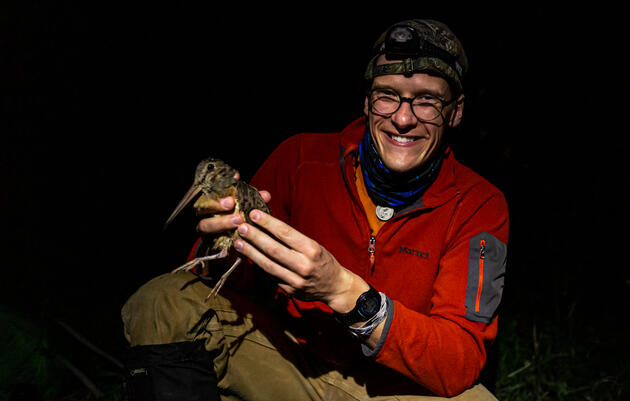Spring has finally sprung (if you don’t count the recent snow squall), which means we will soon see many of our favorite migratory species returning to spend their summer in the Northeast. Some of my favorite migratory species such as Song Sparrows and Red-winged Blackbirds have started singing their very conspicuous songs again. While other species like the Scarlet Tanager and Red-eyed Vireo make the arduous journey all the way down to South America, these birds are more short-distance migrants, often spending their winters in the southern United States. Regardless of where they migrate to, the forests, grasslands, and waters alike have started to display a wonderful summer-like liveliness upon their return. As more of our feathered friends make the journey north, there are many ways that we can aid in their voyage and avoid creating unsafe passes.
A major point of contention is what to do with our domestic cats. I have two cats myself, and I know how hard it is to resist the temptation to let them roam freely outside. However, domestic cats are one of the greatest threats to bird populations, killing between 1.3 and 4 billion birds annually in the U.S. alone. This problem is exacerbated in the spring with the arrival of millions of springtime migrants. Tired, hungry, and looking for a place to rest, these birds become easy targets for sneaky felines. We don’t have to let this problem continue, and there are a few easy ways you can make a difference!
First and most simple: keep your cats indoors. Yes, it may seem odd to keep such a ferocious predator confined to your home, but it is almost a guarantee that they won’t be catching any birds through the windows. Keeping your cats inside not only keeps them from directly contributing to bird mortality, but it also has the potential to reduce feral cat populations and curb feline-related bird deaths indirectly. Between 80-90% of domestic cats are spayed or neutered according to The Humane Society of the United States, but allowing those 10-20% to roam free will add to the 70 million feral cats in the country. Please keep your kitties indoors and you can enjoy watching the birds visiting your yard together from the window. If you want to give your kitty some outside time in a safe and responsible way, consider installing a “Catio!” These structures can give your feline friend a contained outdoor space to explore and can make a great DIY project!
Another solution that shows promise against the threat of outdoor cats is the use of a colorful, patterned collar. Studies show that collars from organizations such as BirdsBeSafe have decreased birds mortality caused by outdoor cats by 60% compared to traditional collars or no collars. These flashy articles of cat fashion hinder their ability to sneak up on their would-be avian prey and give the birds more warning to avoid being caught. Check out this Audubon article to learn more about these collars and how effective they can be in practice!
In addition to keeping cats indoors, you can keep migrating birds happy and healthy by providing a safe place to rest and recoup after a long and arduous northward flights. If humans migrated seasonally this way, I think you’d agree that you would be very tired and need to take breaks along the way, which is why it is important that we conserve naturally occurring resting places, called migratory stopover sites, and do our best to create a welcoming environment in others. We can mimic stopover sites by planting native plants on our properties. Honor bird migration and National Native Plant Month by using the Audubon Plants for Birds Database to look up what plants are native to your area, the kinds of birds they attract, and where you can purchase plants locally. Native plants provide ample shelter, food, and nesting sites for a host of different bird species.
For example, native trees can provide some immense benefits to seasonal migrant species compared with non-native plants. Oaks can support over 550 insect species which birds will happily munch on, while non-native trees might support just a handful. Other shrubs and flowers such as jewelweed, coneflowers, and holly provide a variety of food in the forms of nectar, seeds, and berries which can help support a wide number of migratory species with varied diets. The benefits you provide to birds by creating intentionally bird-friendly spaces can also be felt in your wallet. Native plants help save on water, energy, and maintenance costs compared to conventional grass lawns, and can help reduce pollutants and runoff from fertilizers and gas-powered lawn tools. Overall, cultivating native plant species for your yard can lead to a reduction in cost of up to 90% over 10 years, providing financial incentive in addition to an environmental incentive. For more information, check out more Audubon resources on bird-friendly yards.
Turn off the lights! Did you know that more than 80% of seasonal migrant bird species make their flights at night? The moon and stars act as key navigational aids for some, while others do this to avoid diurnal predatory birds such as hawks, falcons, and other raptors. Unfortunately, historical flight paths that pass through cities and towns can become obscured when artificial lights persist long into the night, which can lead to disruptions in migration timing and routing, and collisions with buildings. In fact, collisions with buildings, windows, and other human-made structures result in the death of millions of birds every year. To reduce disruptions to nighttime migrating flocks, many cities and communities have started Lights Out initiatives, which encourage businesses and residents to turn off the lights on nights when migrating birds are most vulnerable. Programs in cities such as Flagstaff, Arizona and St. Louis, Missouri have been greatly successful, and initiatives are spreading to more communities across the country. Check out resources from Audubon, DarkSky.org, and BirdCast to learn more about how you can help birds fly safely at night in your community.
Along with the Lights Out initiative, you can make your house’s windows safer for birds by using specially patterned glass, window stickers and decals, or other methods to obstruct a window’s reflective, transparent surface. While many believed that the cost to install such deterrents would outweigh the benefits, we are seeing more and more glass companies develop cost-effective, bird-friendly alternatives to conventional glass windows which have been installed in many high-profile projects around the country. For more information on resources for creating bird-friendly windows in your own home, check out this Audubon article.
As the birds continue to arrive for the nesting season, I’m sure they will appreciate the effort that we have all made to protect them. I hope this article has given you ideas for some conservation actions you can take to truly make a difference in your own backyard.









